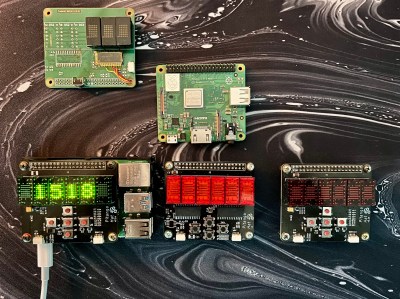This eye-catching entry to the One Hertz Challenge pairs vintage LED indicators with a modern RPi board to create a one-of-a-kind clock. The RPI TinynumberHat9 by [Andrew] brings back the beautiful interface from high end electronics of the past.
This project is centered around the red AL304 and green ALS314V 7-segment display chips. These 7-segment displays were produced in the 1970s and 1980s in the Soviet Union; you can still find them, but you’ll have to do some digging as they are only becoming more rare. [Andrew] included the data sheet for these which was a good find, it is written in Russian but doesn’t hold any surprises, these tiny LEDs typically forward current is 5mA at 2V. One of the things that jumps out about these LEDs is the gold leads, a sure sign of being a high-end component of their day.
When selecting a driving chip for the LEDs, [Andrew] looked at the MAX7219 and HT16K33; he settled on the HT16K33 as it supports I2C as well as allows the easy addition of buttons to the HAT. Due to being driven by I2C, he was also able to add a Qwiic/Stemma I2C connector, so while designed initially to be a HAT for a Raspberry Pi Zero 2 W board, it can be connected to other things in the Qwiic/Stemma ecosystem.
Thanks [Andrew] for submitting this beautiful entry into the One Hertz Challenge. We love unique 7-segment displays, and so it’s pretty awesome to see 40-year-old display tech brought into the present.













